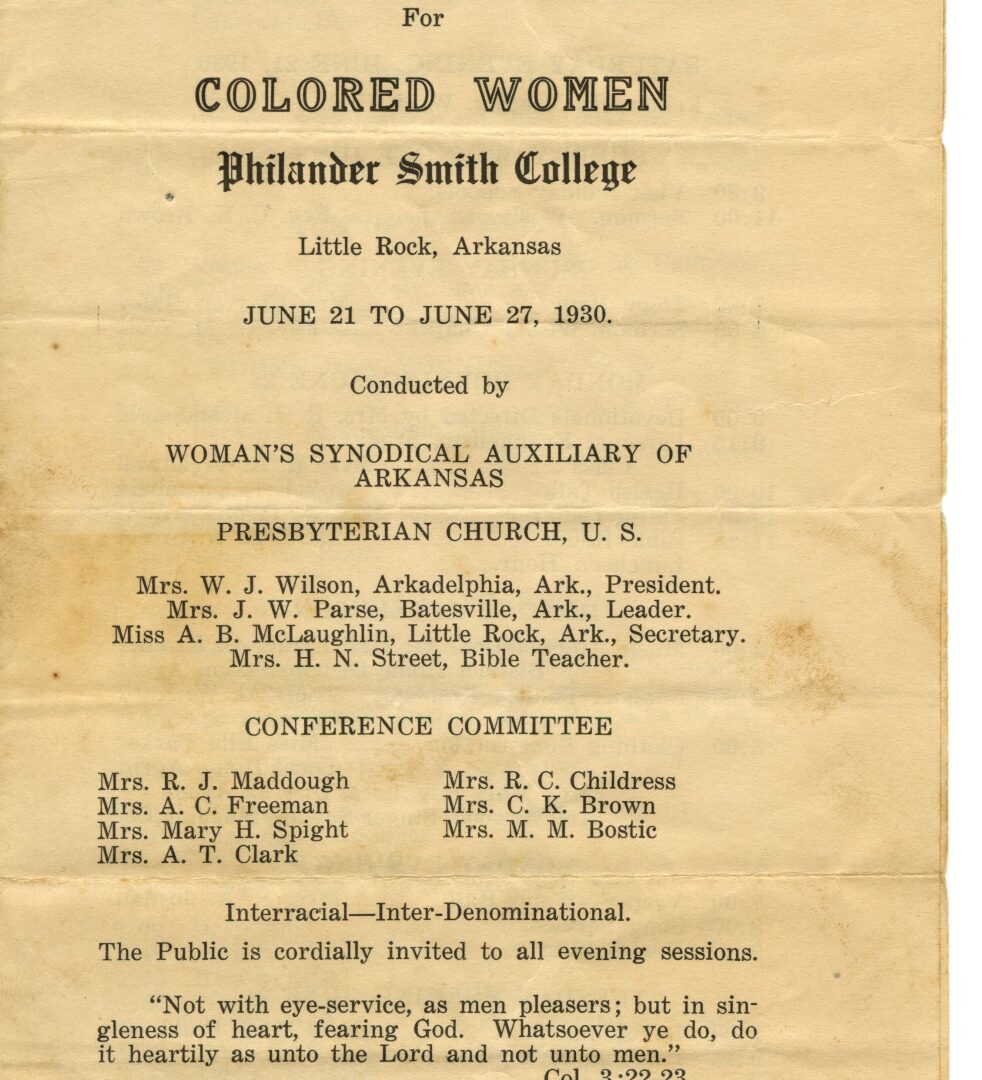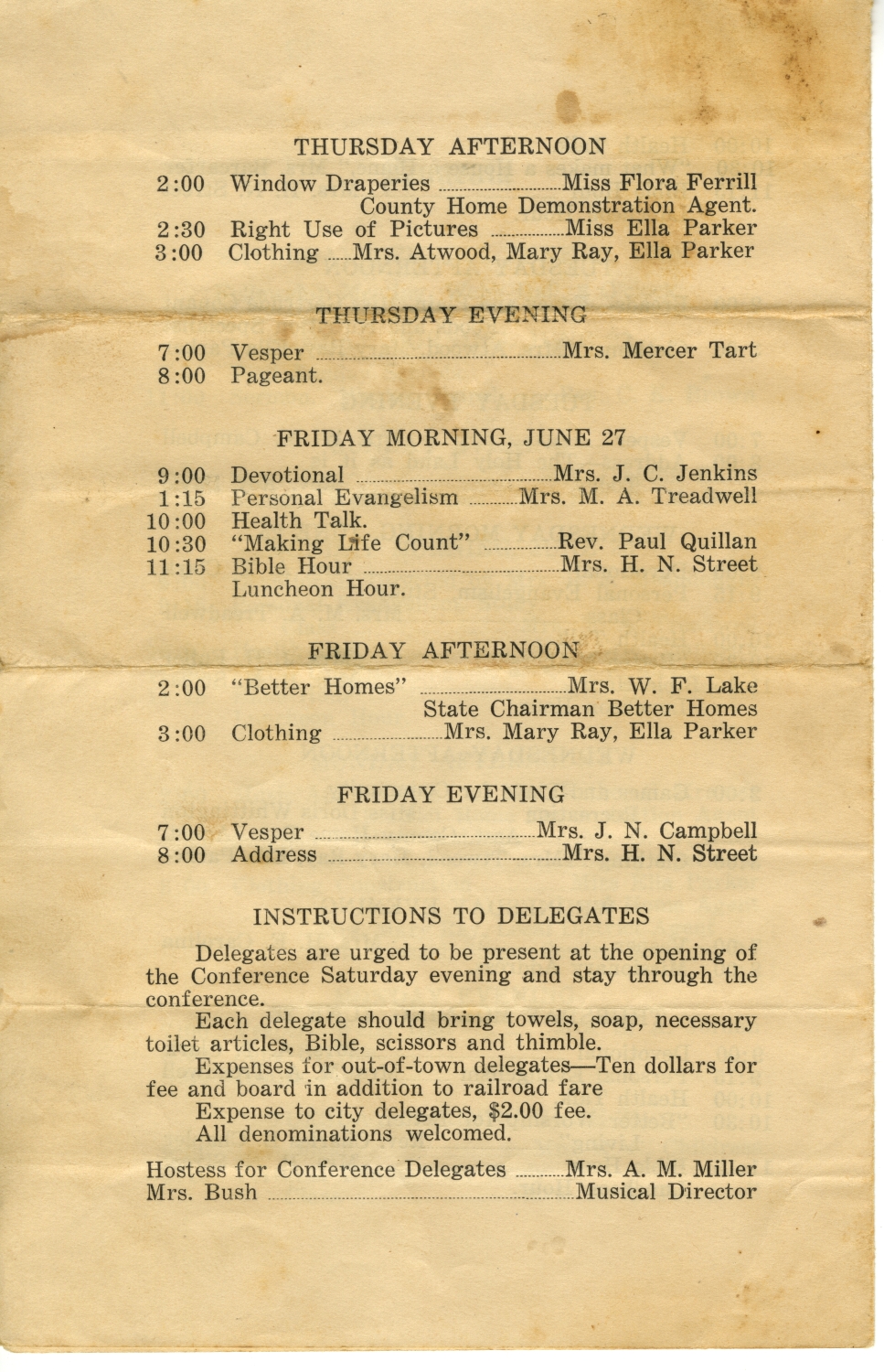Black Church and Community Organization
Introduction
The Black Church has been historically one of the most important institutions for African American communities. During the centuries when African Americans were enslaved, deprived of political and civil rights, and legally segregated from their fellow white Americans, the Black Church remained the heart of the African American life. It provided a safe space to preach and pray but it has always been much more than a place of spiritual practice. It was the center of education, civil rights struggle, and social activism but also the center of respite from racial oppression, entertainment, and artistic expression. While historically men served as pastors and political leaders, women became community organizers in their churches. In that role, they organized social services for those in need, educational programs for children and adults, or leisure time activities for African American families unwelcome in white-only segregated spaces.
In this activity, you will analyze a program of a 1930 conference organized by African American women, who belonged to an organization known as the Woman’s Synodical Auxiliary of Arkansas, which was affiliated with the Presbyterian Church. This document illustrates how African American women organized and supported their communities during the era of racial segregation. Note that the conference took place at the Philander Smith College, which is a private historically black college that exists until today in Little Rock, Arkansas.
Activity Questions
Fourth Annual Christian Conference for Colored Women, Philander Smith College, Little Rock, page 4
- Who are the women who organized the conference and for whom was the conference organized?
- What themes and activities did the women cover during the conference? Which of them were of religious and which of secular (non-religious) nature?
- What do the themes and activities covered during the conference tell you about these women’s lives and choices?
- Why do you think the conference organizers added on the first page “Interracial – Inter-Denominational. The Public is cordially invited to all evening sessions.”?
- How would you characterize the social status of the women who could come to this event in 1930? Were they poor or well off? Well educated or uneducated? Urban or rural?
Primary Sources
To learn more about the primary sources featured in the activities above, click the following links:
Arkansas Social Studies Standards
Arkansas History, Grades 7 – 8
- Strand: History
- Content Standard 7 – Students will examine the impact of historical events and people on the development of Arkansas
- H.7.AH.7-8.1: Evaluate ways that historical events in Arkansas were shaped by circumstances in time and place
- H.7.AH.7-8.5: Discuss social, economic, and political reforms of the Progressive Era in Arkansas from multiple perspectives using a variety of sources
Arkansas History, Grades 9 – 12
- Strand: Era 4: Early 20th Century 1901-1940
- Content Standard 4: Students will analyze factors that influenced the perspectives of Arkansans in the early 20th century.
- Era4.4.AH.9-12.1: Investigate social, economic, and political reforms of the Progressive Era in Arkansas from multiple perspectives using a variety of primary and secondary sources
African American History, , Grades 9 – 12
- Strand: Seeds of Change 1920-1950
- Content Standard 5: Students will analyze the African American experience from 1920-1950.
- SC.5.AAH.1 Analyze change and continuity in the African American cultural identity using primary and secondary sources
Key Terms
Downloadable Guides and Handouts
We encourage K-12 educators to use History Alive: Virtually! in a way that will best match their classroom needs. The “Exercise” handout includes a complete exercise as featured on this website, the “Primary Sources” handout includes only primary sources used in the exercise, and the “Questions” handout includes analytical questions from the exercise but is editable and can be easily changed to best match students’ needs.
Black Church and Community Organization – Exercises


